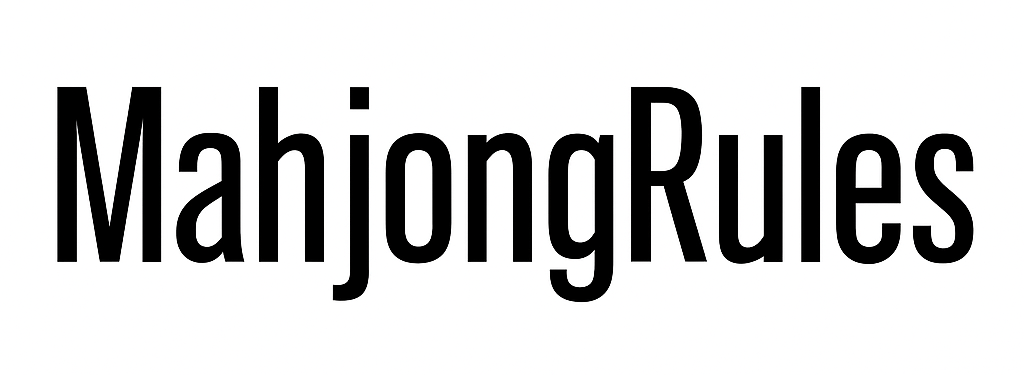If you’re playing mahjong and only focusing on your own tiles, you’re missing half the game. Today, we’re diving deep into the art of reading opponents’ hands – what they discard, how they move, and when you should worry (or pounce).
Hi, I’m Connor. After years of playing both online and in-person mahjong, I’ve learned that reading your opponents is what separates casual players from killers at the table. And trust me – once you start noticing what they are doing, the entire game opens up.
Why Reading Opponents’ Hands Is Crucial
Reading opponents isn’t just about showing off. It helps you:
- Avoid feeding them winning tiles
- Disrupt their strategy
- Time your own calls and discards more effectively
It’s especially important in Chinese and Riichi mahjong, where discard awareness and hand concealment are essential to success.
Connor’s Take:
“The first time I guessed someone’s wait correctly and denied their win? I felt like I unlocked a cheat code. It’s not magic. It’s pattern reading.”
What Discards Reveal
Every discard is a message – what’s been rejected tells you what they might be building.
Early Game Discards
- Discarding terminals (1s and 9s) or honors early = typical hand building
- Discarding middle tiles (4s/5s/6s) early = could be aiming for honors, flushes, or weird hands
Mid-Game Discards
- A consistent suit missing from their discards? They might be hoarding it
- Repeating numbers like 4🀄, 4●, 4🀐? They’re probably not making a chow with 3-4-5
Late Game Discards
- If someone discards a tile they could win with, they’re likely folding (playing safe)
- If they discard only from one suit, they may be playing a flush or close to mahjong
Connor’s Take:
“I used to ignore discards until someone explained it like playing poker with everyone’s fold history visible. Once I tuned in, everything changed.”
Tempo Tells: How Fast They Move
How quickly someone draws, discards, or calls tiles says a lot:
- Fast players often know what they want – possibly close to mahjong
- Hesitant discards mean indecision or changing strategies
- Pauses before a discard could mean they’re choosing between key tiles
In live play, watch their eyes. Online? Watch their pattern rhythm.
Connor’s Tip:
“If someone slows down near the end of a round, I play safe. A quick hand turns cautious when it’s one tile away.”
Hand Shape Guessing 101
You don’t need X-ray vision to get a sense of an opponent’s hand type:
Spotting Flushes
- They only discard one suit? They’re probably going for a flush
- Especially common in Chinese mahjong and Riichi Yakuhai hands
Watching Honors
- Keeping all honor tiles late = they’re trying for an honors-based hand
- Discarding honors early = they’re not aiming for big Yakuman-type hands
Riichi Defense Clues
- In Japanese mahjong, once someone declares riichi, you can guess their wait based on what they’ve discarded since then
- Repeated tiles, obvious safe discards, and no middle tiles = be cautious
Connor’s Note:
“Once I noticed a guy never discarding dots until the end – and then won with a dot-based flush – I started watching suit commitment like a hawk.”
Tools to Practice Reading Opponents’ Hands
Online Replay Tools
- Mahjong Time, Tenhou, and Riichi City let you replay matches
- Review winning hands and see how their discards built up
Flashcard Training
- Some apps or printed sheets let you practice hand reading visually
Live Game Journaling
- Note who won, what they discarded, and how you misread or guessed right
Connor’s Habit:
“After every game, I jot down one hand I totally misjudged. Rewatching that mistake later is humbling – and helpful.”
FAQs: Reading Opponents’ Hands in Mahjong
How can I tell if someone is close to mahjong?
Watch for faster discards, limited calls, and suit consistency. The less variety in their discards, the closer they probably are.
Is it easier to read opponents’ hands online or in person?
Offline games offer more physical cues, but online games let you analyze discards more easily with replays. Both are valuable for learning.
Can beginners really learn to read hands?
Yes! Start with one cue: track which suits they’re avoiding. Then add more layers as you improve.
Should I always avoid discarding the same suit they’re not discarding?
Not always. It could be a fake-out. But it’s safer to discard from suits you know they are discarding from.
Final Thoughts
Reading opponents in mahjong is a skill built one glance, one tile, one game at a time. It’s part deduction, part instinct, and part experience.
The better you get at spotting patterns, the less you’ll rely on luck – and the more you’ll start steering the game on your terms.
Connor’s Last Word:
“Mahjong isn’t just played with your hands. It’s played with your eyes. Watch closely. The tiles are talking.”
🀄 Ready to read between the tiles?
